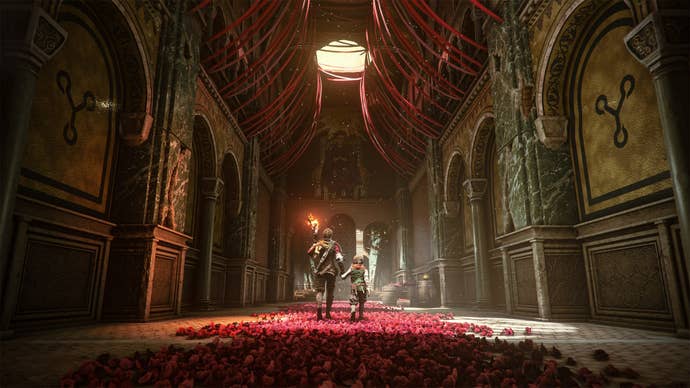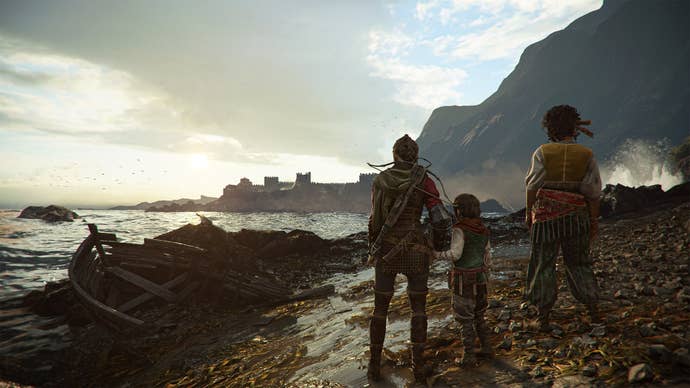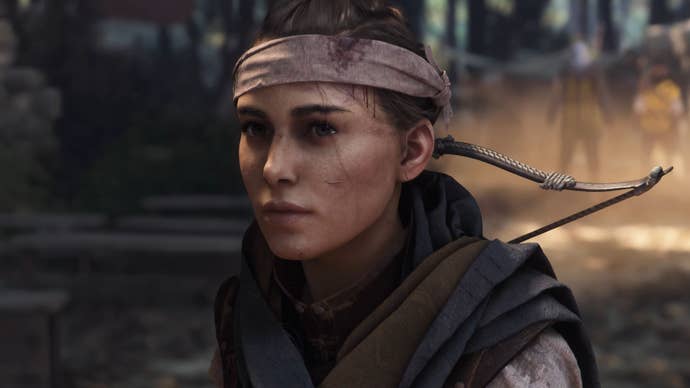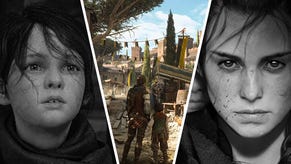A Plague Tale: Requiem will easily take the title of this year's most harrowing Xbox Game Pass game
The story of Hugo and Amicia doesn’t get any easier in A Plague Tale: Requiem – in fact, it’s getting much, much nastier.
A Plague Tale: Innocence was a breakout hit: it came from pretty much nowhere, infested the minds of gamers the world over, and gnawed through any preconceptions of what everyone thought would be just another stealth game’. Asobo Studio picked up accolades ranging from best narrative, best art direction and studio of the year – as well as a slew of Game of the Year awards – for its sleeper hit effort with the first game in the series. And rightly so; rarely do we see stories so affecting, so artfully done, and so sublimely grotesque… all at the same time.

So, following up with A Plague Tale: Requiem was never going to be an easy feat. Asobo wasn’t even sure if it’d get to make a sequel to the game whilst the original was in development – and that’s probably for the best. It means the original story wasn’t chopped up, butchered, and Frankenstein’d back together for the sake of a sequel. It means that each game retains its own identity, its own outlook, and its own take on where storytelling and mechanics intersect. It means that Requiem, from what we’ve seen so far, is even more harrowing than its predecessor.

From a top-down view, Requiem is very much more of the same: high fidelity graphics, an emphasis on stealth, deep and unsettling horror thumbed into every pore of the game. Wherever you do, there’s the chattering of rats and the pungent smell of death – this is a world where Europe is still in the grips of a heaving infestation, after all. Your actions in the last game haven’t solved the vermin epidemic. But where the first game made you feel underpowered and vulnerable, just children trying to survive in a world utterly hostile to life, Requiem makes you the threat – in some quietly horrifying ways.
In an hour-long demo at the booth, I got to experience Amicia and Hugo's continuing story from a way into the follow-up. The dynamic has changed: these children are still on their back foot, they’re still hunted, underpowered, and weak. But Amicia has hardened up after her encounter with the Inquisitors before; she’s armed with a crossbow now, for when she occasionally must deploy long-range, lethal tactics in order to move on. Ammo is scarce, as you’d expect, and the emphasis is still on stealth, and moving rats around with light and fire in order to eke out passages amongst the threats.
We’re dropped into the game about halfway through, where Amicia has been badly hurt. She’s putting on a brave face for little Hugo, but there’s not much strength left in her. Ever the big sister, she’s guiding him to an island that haunts his dreams – perhaps where whatever the hell is going on with him can be exorcised, or at least understood. As Amicia struggles with the guilt of slaughtering to survive, an understanding but equally traumatized Hugo has been opening up to his older sister about his relationship with the rats: how he can talk to them, feel them, control them. Amicia, of course, is wary. These are just the fantasies of a poor, traumatized boy, right? No. No, they’re not.
It all comes to a head when Amicia finally gives in to her wounds: she collapses on the floor, just as some Inquisitor guards are bearing down on the sibling duo. Hugo, distraught, and about to lose the last person in his life he can depend on, calls out to the rats. They hear his plea, and give themselves unto him – the true horror begins.
If you thought watching Amicia fall victim to swarms of rats in the first game was unsettling, this ups the ante tenfold – seizing command of the horde and trying to usher it around with loose, bumpy controls feels just awful in your hands. But it's compelling; you’re pushed on, driven, and can’t turn back – you’re just a tide of rats destroying everything in its path. All the while, you hear the disembodied cries of Hugo, forced to watch the carnage he’s causing.
You control the swarm, crazed and gnashing, and you’re forced to chase down the guards, chattering away and stripping flesh from the bones of any living thing in your path. You can’t progress until you have (and I’d wager other puzzles will need you to thin out the guards’ ranks in future, too). To hear the animal chattering of the rats as Hugo moans and resists… it’s a very different flavour of unsettling compared to the first game, but it’s unsettling nonetheless. Worse if you’re playing with a decent pair of headphones. Makes you feel like you need a shower. God knows how poor Hugo feels.

Narrative implications aside, this new mechanic opens up the straight-forward stealth nature that the series has existed within to date. It layers some extra texture on top of what was already a best-in-class narrative stealth experience. I have some reservations about pacing – this demo was halfway through the game, and still seemed to be introducing you to new mechanics – but if the first game is anything to go by Asobo knows what it’s doing.
I am eager to play the full version of A Plague Tale: Requiem – and I’m even more eager to see the conversation it’ll kick up when everyone with a Game Pass subscription gets the chance to pick it up later this year. I’m looking forward to seeing whether I’m just sensitive, or if the act of chasing fathers, husbands, and lovers down as a pack of rats really is as upsetting as it was on the Gamescom show floor.
I’m just not relishing the fact it’s going to make me hear the chittering and chattering of rats everywhere I go for the next week afterwards.
A Plague Tale: Requiem releases on October 18, 2022 on Xbox Series X|S, PlayStation 5, PC, and in Cloud Version on Nintendo Switch.










